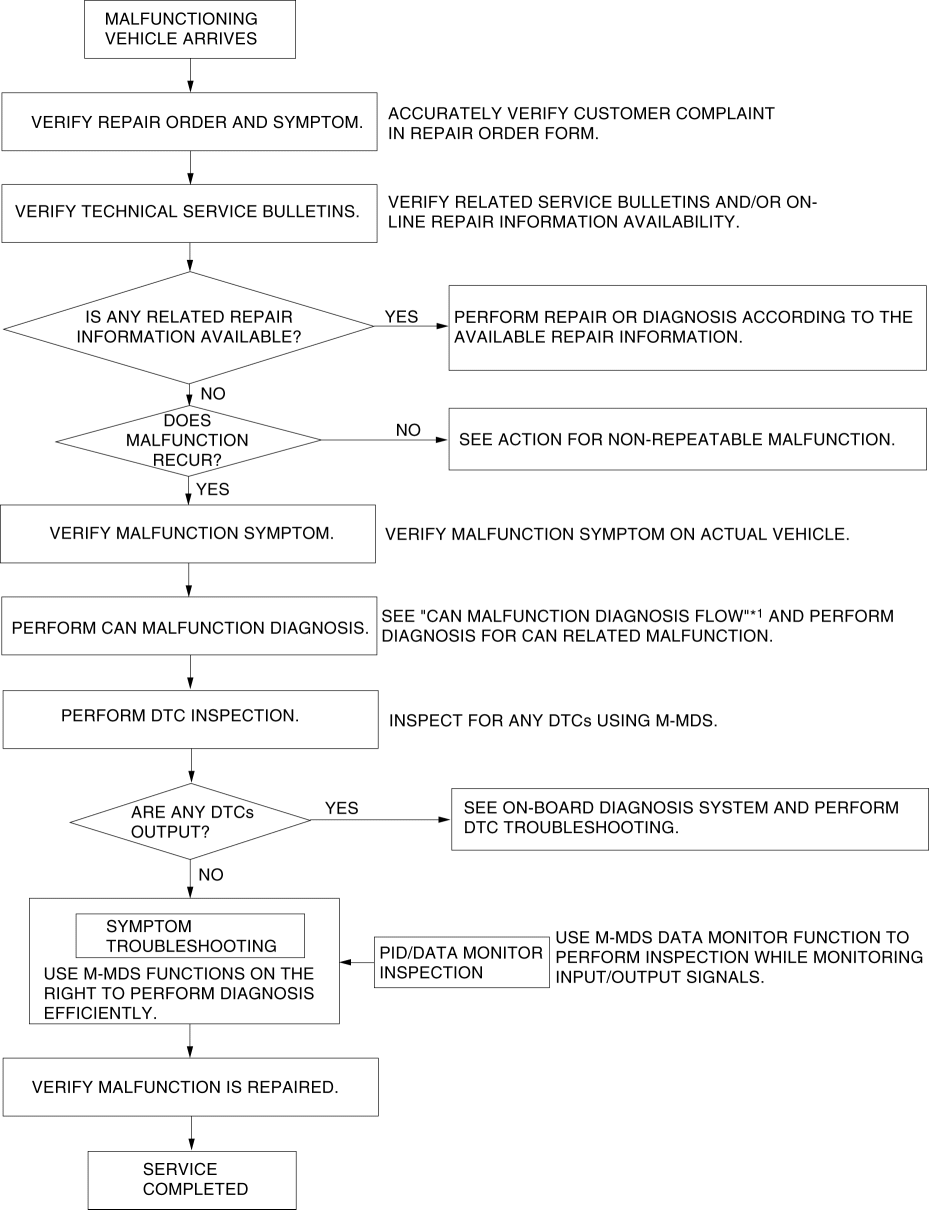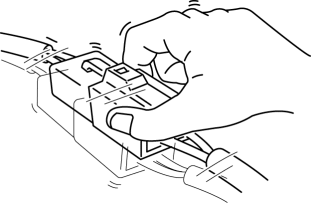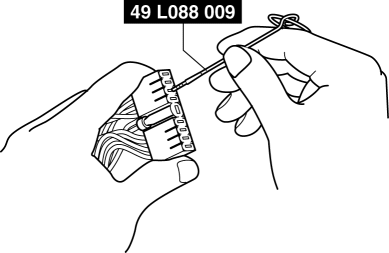FOREWORD [SAS CONTROL MODULE (STANDARD DEPLOYMENT CONTROL SYSTEM)]
If there is any vehicle malfunction complaint lodged by a customer, perform malfunction diagnosis according to the troubleshooting procedure.
When reconnecting all the disconnected connectors, always connect the SAS connectors last.
Troubleshooting Procedure
Action for non-repeatable malfunction
If the malfunction does not recur, verify the malfunction cause by performing the following actions:
Verify that a DTC has been recorded in the memory.
Based on the repair order form, attempt to drive the vehicle or perform tests to replicate the malfunction, record the data (such as CAN circuit voltage) at that time, and detect the malfunction cause.
Refer to [Determining Open Circuit Location] based on the recorded DTC, shake the wiring harness or connector of the electrical component which is suspected to be the cause of the malfunction, and inspect for any changes in CAN system voltage or occurrence of any DTCs.
Inspect the female terminals on the connector of the electric component which is suspected to be the cause of the malfunction for poor connection.
Air Bag System Specification Identification
Because two types of driver and passenger-side air bag module controls, “Two-step deployment control” and “Standard deployment control”, are available depending on when the vehicle was produced, identify the specification referring to the following identification.
Identification
×: Equipped-: Not equipped
In this manual, “Two-step deployment control system” or “Standard deployment control system” is used if the service contents differ depending on the control.
Control is identified by the following components.
| Item |
Two-step deployment control system |
Standard deployment control system |
| Sophisticated air bag sensor (SAS) control module |
× |
× |
| Crash zone sensor |
× |
× |
| Side air bag sensor |
× |
× |
| Pressure sensor |
× |
- |
| Driver-side air bag module |
× (Two-step deployment type) |
× (Standard deployment type) |
| Passenger-side air bag module |
× (Two-step deployment type) |
× (Standard deployment type) |
| Side air bag module |
× |
× |
| Lap pre-tensioner seat belt |
× |
- |
| Pre-tensioner seat belt |
× |
× |
| Clock spring |
× (Two-step deployment type) |
× (Standard deployment type) |
| Occupant classification sensor |
× |
- |
| Occupancy sensor |
- |
× |
| Driver-side buckle switch |
× |
× |
| Passenger-side buckle switch |
× |
× |
| Air bag system warning light |
× |
× |
Outline
< Previous Next >
The OBD (on-board diagnostic) system has the following functions:
Malfunction detection function: Detects malfunctions in the air bag system and outputs DTCs (Diagnostic Trouble Codes).
PID/data monitor function: Reads out specific input/output signals and the system status.
DTCs can be read/cleared using the M-MDS.
NOTE:
Use the M-MDS to verify DTCs because the DTCs displayed by the air bag system warning light are reference information only.


